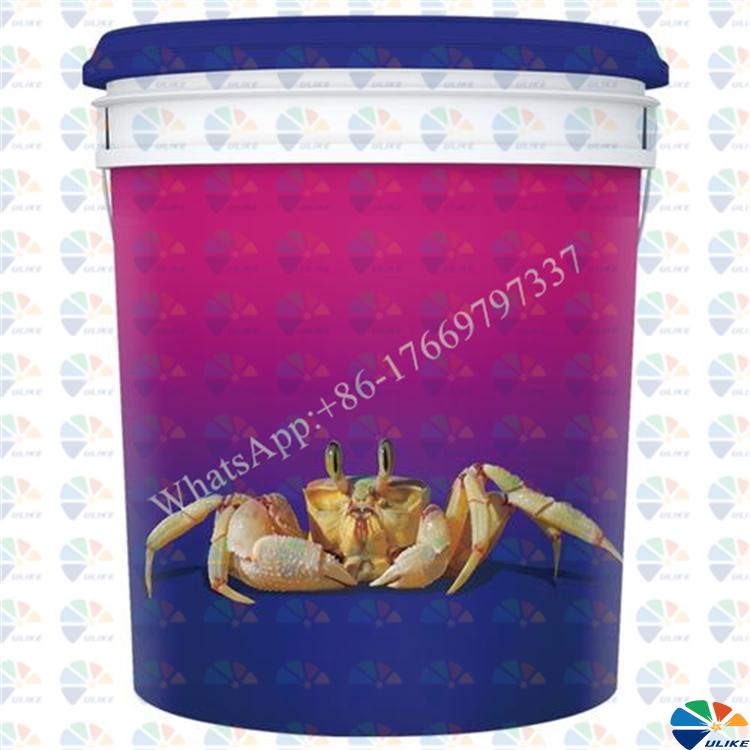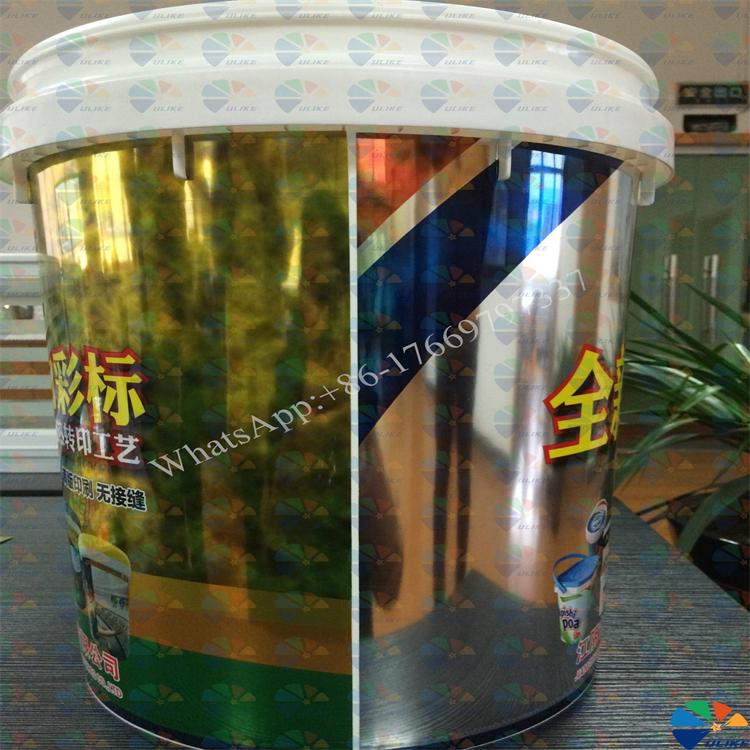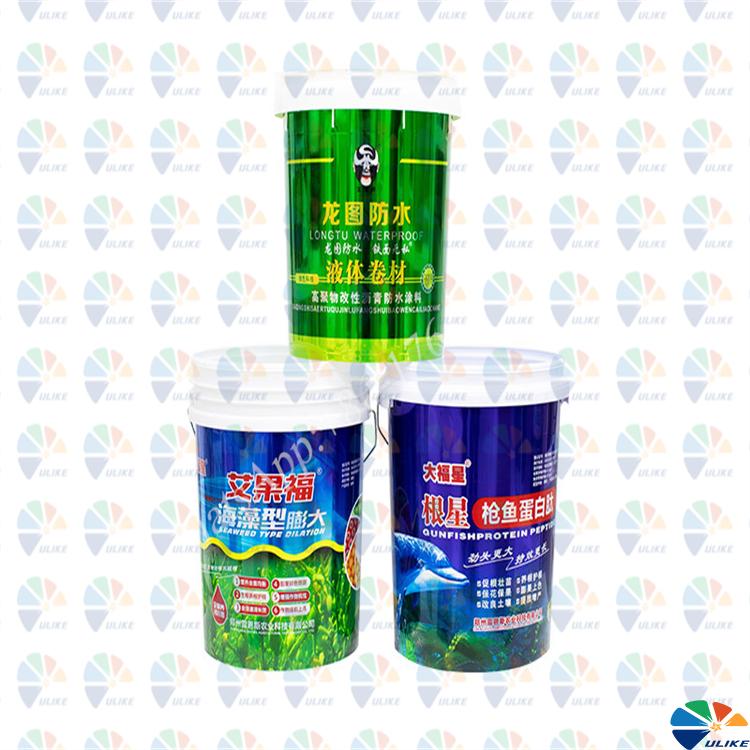In-Mold Labeling (IML) in Plastic Buckets: Applications and Advantages
In-Mold Labeling (IML) in Plastic Buckets: Applications and Advantages
In-Mold Labeling (IML) has emerged as a transformative technology in the packaging industry, particularly in the production of plastic buckets. This advanced labeling method integrates the label with the plastic bucket during the manufacturing process, resulting in a durable, high-quality finish that is both aesthetically pleasing and functional. In this article, we will explore the specific applications of IML in plastic buckets, highlighting the benefits and advantages of this technology within this sector.
IML Technology Overview
In mold labeling involves placing a pre-printed label inside the mold used to form plastic buckets. As the plastic is injected into the mold, it fuses with the label, creating a single, seamless piece. This method eliminates the need for post-production labeling and ensures that the label is permanently adhered to the bucket, offering superior resistance to wear and tear.
Key Applications of In-Mold Labels in Plastic Buckets
-
Chemical Containers
-
Plastic buckets used for storing and transporting chemicals benefit significantly from in mold labeling. The labels on these containers often need to withstand exposure to harsh substances, UV light, and extreme temperatures. IML provides a robust solution, ensuring that critical safety information, brand logos, and other essential details remain intact throughout the product's lifecycle.
-
Paint and Coating Buckets
-
In the paint and coatings industry, in mold labels are widely used to decorate plastic buckets. These buckets often require vibrant, eye-catching designs to stand out on retail shelves. IML allows for the application of high-resolution, multi-color graphics that are resistant to scratches, moisture, and chemical exposure, making them ideal for long-term use in both retail and industrial settings.
-
Food-Grade Buckets
-
For food storage and transportation, plastic buckets need to meet stringent hygiene standards. In mold labeling is an excellent choice for food-grade buckets as it eliminates the need for adhesive labels, which can harbor bacteria. The seamless integration of the label into the bucket’s surface ensures that it remains free from contaminants, making it safe for direct contact with food products.
-
Industrial and Agricultural Buckets
-
In industrial and agricultural applications, plastic buckets are often exposed to rugged conditions. In mold labels used on these buckets provide a durable solution that can endure exposure to dirt, water, and mechanical stress. The ability to include detailed information, such as usage instructions or safety warnings, directly on the bucket adds significant value to these products.
Advantages of In-Mold Labels for Plastic Buckets
-
Durability
-
One of the primary benefits of in mold labeling is the enhanced durability it offers. Since the label becomes an integral part of the plastic bucket, it is highly resistant to peeling, fading, and scratching. This is particularly important in applications where the buckets are frequently handled, stacked, or transported.
-
High-Quality Graphics
-
In mold labeling allows for the use of high-resolution graphics, including complex designs, gradients, and photographic images. This results in a premium look that can greatly enhance brand visibility and appeal. The ability to produce consistent, vibrant colors ensures that the product maintains its visual impact over time.
-
Cost-Effectiveness
-
While the initial setup for IML can be more expensive than traditional labeling methods, it offers significant long-term cost savings. By eliminating the need for post-production labeling and reducing the risk of label damage, manufacturers can decrease production times and minimize waste, leading to lower overall costs.
-
Environmental Benefits
-
In mold labels are typically made from the same material as the plastic bucket, making the entire product more recyclable. Additionally, the process reduces the need for additional adhesives or coatings, contributing to a more sustainable production method.
-
Enhanced Product Safety
-
In industries where safety is paramount, such as food or chemicals, in mold labels provide a reliable way to ensure that important information is always visible and legible. The integration of the label into the bucket’s structure prevents it from being removed or damaged, which is crucial for maintaining compliance with safety regulations.
Future Trends and Innovations
As the demand for more sustainable and durable packaging solutions grows, in mold labeling is expected to play an increasingly important role in the production of plastic buckets. Innovations in IML technology, such as the use of biodegradable materials or smart labeling features like QR codes or RFID tags, are likely to expand its applications even further. These advancements will enable manufacturers to meet the evolving needs of consumers while also adhering to stricter environmental and regulatory standards.
Conclusion
In mold labeling has revolutionized the plastic bucket industry by providing a durable, cost-effective, and environmentally friendly labeling solution. Its applications across various sectors, from chemicals and paints to food and agriculture, demonstrate its versatility and effectiveness. As the technology continues to evolve, in mold labels for plastic buckets will remain a crucial tool for manufacturers seeking to enhance product quality, safety, and sustainability.



![af]() Afrikaans
Afrikaans![sq]() Albanian
Albanian![am]() Amharic
Amharic![ar]() Arabic
Arabic![fr]() French
French![es]() Spanish
Spanish![ru]() Russian
Russian![de]() German
German![hy]() Armenian
Armenian![it]() Italian
Italian![ja]() Japanese
Japanese![ko]() Korean
Korean![pt]() Portuguese
Portuguese![hi]() Hindi
Hindi![az]() Azerbaijani
Azerbaijani![ro]() Romanian
Romanian![pl]() Polish
Polish![th]() Thai
Thai![el]() Greek
Greek![eu]() Basque
Basque![en]() English
English![zh-CN]() Chinese (Simplified)
Chinese (Simplified)![zh-TW]() Chinese (Traditional)
Chinese (Traditional)![be]() Belarusian
Belarusian![bn]() Bengali
Bengali![bs]() Bosnian
Bosnian![bg]() Bulgarian
Bulgarian![ca]() Catalan
Catalan![ceb]() Cebuano
Cebuano![ny]() Chichewa
Chichewa![co]() Corsican
Corsican![hr]() Croatian
Croatian![cs]() Czech
Czech![da]() Danish
Danish![nl]() Dutch
Dutch![eo]() Esperanto
Esperanto![et]() Estonian
Estonian![tl]() Filipino
Filipino![fi]() Finnish
Finnish![fy]() Frisian
Frisian![gl]() Galician
Galician![ka]() Georgian
Georgian![gu]() Gujarati
Gujarati![ht]() Haitian Creole
Haitian Creole![ha]() Hausa
Hausa![haw]() Hawaiian
Hawaiian![iw]() Hebrew
Hebrew![hmn]() Hmong
Hmong![hu]() Hungarian
Hungarian![is]() Icelandic
Icelandic![ig]() Igbo
Igbo![id]() Indonesian
Indonesian![ga]() Irish
Irish![jw]() Javanese
Javanese![kn]() Kannada
Kannada![kk]() Kazakh
Kazakh![km]() Khmer
Khmer![ku]() Kurdish (Kurmanji)
Kurdish (Kurmanji)![ky]() Kyrgyz
Kyrgyz![lo]() Lao
Lao![la]() Latin
Latin![lv]() Latvian
Latvian![lt]() Lithuanian
Lithuanian![lb]() Luxembourgish
Luxembourgish![mk]() Macedonian
Macedonian![mg]() Malagasy
Malagasy![ms]() Malay
Malay![ml]() Malayalam
Malayalam![mt]() Maltese
Maltese![mi]() Maori
Maori![mr]() Marathi
Marathi![mn]() Mongolian
Mongolian![my]() Myanmar (Burmese)
Myanmar (Burmese)![ne]() Nepali
Nepali![no]() Norwegian
Norwegian![ps]() Pashto
Pashto![fa]() Persian
Persian![pa]() Punjabi
Punjabi![sm]() Samoan
Samoan![gd]() Scottish Gaelic
Scottish Gaelic![sr]() Serbian
Serbian![st]() Sesotho
Sesotho![sn]() Shona
Shona![sd]() Sindhi
Sindhi![si]() Sinhala
Sinhala![sk]() Slovak
Slovak![sl]() Slovenian
Slovenian![so]() Somali
Somali![su]() Sudanese
Sudanese![sw]() Swahili
Swahili![sv]() Swedish
Swedish![tg]() Tajik
Tajik![ta]() Tamil
Tamil![te]() Telugu
Telugu![tr]() Turkish
Turkish![uk]() Ukrainian
Ukrainian![ur]() Urdu
Urdu![uz]() Uzbek
Uzbek![vi]() Vietnamese
Vietnamese![cy]() Welsh
Welsh![xh]() Xhosa
Xhosa![yi]() Yiddish
Yiddish![yo]() Yoruba
Yoruba![zu]() Zulu
Zulu




